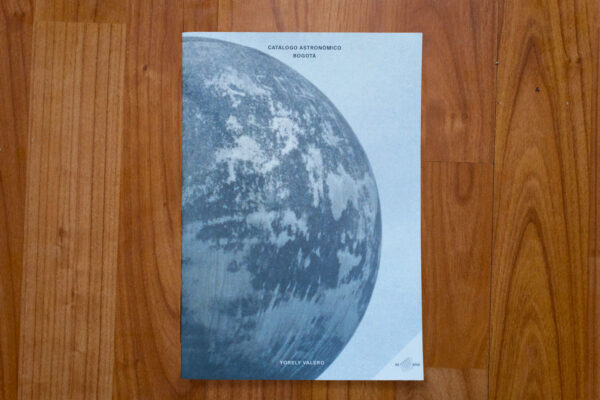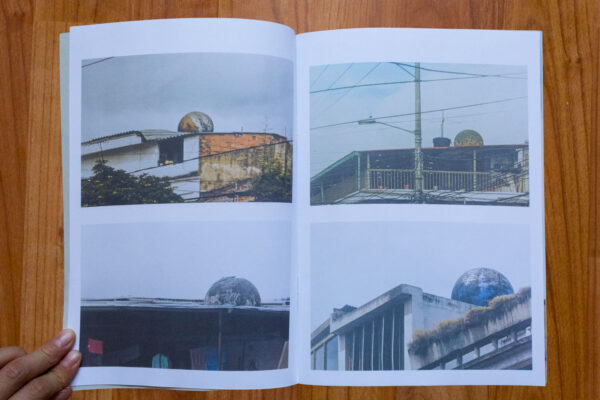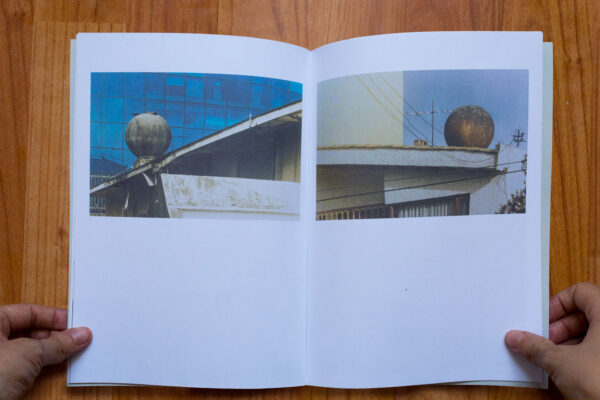It was tiresome looking at galleries — all the paintings — so I decided to take a break at a store that sells art books. As I approached, a cluster of people in sweatshirts poured out of the building like runner ducks from a barn. Their slow, disorganized milling gave the impression that the shop might be in the middle of a fire drill, but no. It was a tour group. I made my way around the crowd and stepped inside without further impediment. What a selection!
When I worked at a used bookstore, lots of customers would come in and say, reviewing our inventory, “this place is kind of overwhelming.” It always expressed both approval and a slight degree of intimidation. Since then I have gone around with the pretend mindset of an experienced bookseller, one who was thrilled by but desensitized to well-stocked bookshops, which makes what occurred on this particular trip even more embarrassing. After a few minutes of half-hearted browsing I found myself upstairs, in front of the glass cases with the really high-end stuff. Some titles I recognized, others were called things like Toilet Man World.
I was so overcome by the sheer density of bound art at my fingertips that I lost track of myself, stepped on my own feet, and fell right down the stairs. Down and down I went, knocking monographs off shelves. Calamity. There goes Ari Marcopoulos. My head ended up inside my own tote bag. The shop is only two stories, but one way or another I just kept tumbling. I’d make a soft landing in a pile of zines, but since these were staple bound they’d collapsed under my weight and came fluttering after me as I continued my interminable descent. A slight nuisance to the chilly employees, this minor avalanche of printed matter. My knees, my ankles, I’m not sure anyone noticed. Once I finally came to a stop, upended atop the stacks of free catalogs and other kindling they keep by the front door, I was able to muster just enough strength to drag myself out into the street. I went and saw some more paintings.
The above, I imagined it all. I mean, did go into an art bookstore, mistook a tour group for a fire drill, and then concocted the avalanche scenario after gently tripping on the stairs without incident; an anxiety thing. At first I had thought, “perhaps I can find something here to review for Glasstire.” But I soon became overstimulated, realized I had plenty of things at home that I’d like to write about, and went to live in my weird ragdoll fantasy while some anonymous beige volume filled with pictures of nothing was still in my hands. Then I stared at my phone, at a text or whatever, as I walked out of the store with a pretty good idea of some recent purchases I could pull off my shelf to discuss.

“Manga Dan Graham Story” by Fumihiro Nonomura, illustrated by Ken Tanimoto, concept by Dan Graham. Reprinted by Marian Goodman Gallery, 2023
Manga Dan Graham Story by Fumihiro Nonomura, illustrated by Ken Tanimoto, concept by Dan Graham. Reprinted by Marian Goodman Gallery, 2023. Find the book here.
A while ago I was feeling uneasy about reviewing a book here that was made by someone I knew. Like, was it fair? Was it low hanging fruit? If so, did any of that matter? Nobody explained the ethics of this stuff to me when I started writing for money. But then I came across Manga Dan Graham Story, paged through the anecdotes of a young Graham exhibiting his now-legendary friends like Dan Flavin and Sol LeWitt in his short-lived New York gallery, and felt better. Artists tend to be friends with artists, and we help each other. Friends, strangers, this is all a conversation.

“Manga Dan Graham Story” by Fumihiro Nonomura, illustrated by Ken Tanimoto, concept by Dan Graham. Reprinted by Marian Goodman Gallery, 2023
Actually, Manga Dan Graham Story made me feel better in a more general way. It made me want to make things. Here, the “inside” of the art world feels about as cozy as it ever could. That has some to do with the “Dan Graham” whose story it tells (in admittedly abbreviated, tall tale-like fashion), but Nonomura and Tanimoto deserve credit as skilled biographers. The important notes seem to all be here, presented in fragmented prose that leaps from story to story with the same unpredictable staccato that the real Graham’s friends say marked his conversational style (Dan Graham passed away in 2022. During his recent memorial at the Metropolitan Museum of Art, performance artist Michael Smith described Dan as speaking in “bullet points”).
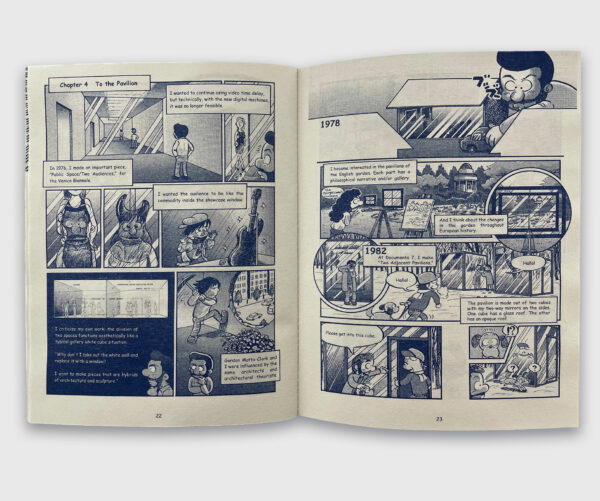
“Manga Dan Graham Story” by Fumihiro Nonomura, illustrated by Ken Tanimoto, concept by Dan Graham. Reprinted by Marian Goodman Gallery, 2023
Tanimoto draws the young Graham as a scraggly or pompadoured badass, and the older Graham as a scholarly grandfather type. The narrative shifts without warning, between first-person statements from Graham to brief personal asides from Nonomura to third-person biography and analysis. Particularly charming are non-sequiturs like, “one can make art with humor and anger”; “Glenn Branca loves Aerosmith!”; and Graham welcoming a visitor to one of his mirrored outdoor pavilions with, “please get into this cube.”
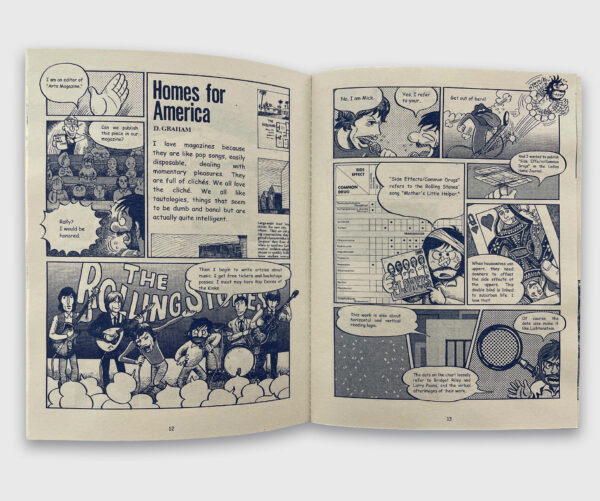
“Manga Dan Graham Story” by Fumihiro Nonomura, illustrated by Ken Tanimoto, concept by Dan Graham. Reprinted by Marian Goodman Gallery, 2023
Originally published in 2001 and previously difficult to find even on the secondary market, Marian Goodman Gallery’s new reprint of the manga is welcome. I’m not sure Graham was correct when he predicted, via word bubble in these pages, “Manga will be the universal language for the youth generation!” Nevertheless, the book offers a concise, joyful introduction to an artist whose life and work would otherwise be daunting to summarize.
****
Catalógo Astronómico by Yorely Valero. Published by Calipso Press, 2019. Find the book here.
This slim volume contains photographs of roofbound spheres that Yorely Valero found around Bogotá, Colombia. They are asbestos water tanks, globular relics of the 1970s that Valero began documenting in 2018. The resultant “Astronomical Catalog” is surprisingly lively for a typology, with a playful scavenger hunt quality and imaginative framework that are not always found in such photo surveys.
Because Valero was mostly photographing from the ground in an urban environment, the pictures are defined by complex compositions of rooftops and power lines. The faux celestial bodies crest over these constructed horizons, always appearing with a smidge of comic surprise despite the consistency of their forms. As cosmos they come off as sluggish, heavy, uninspiring. Delightfully workaday planets. Valero has produced, via this seemingly inexhaustible resource of mundane fun, a succinct yet valuable statement on how much magic can be drawn from merely paying attention.
****
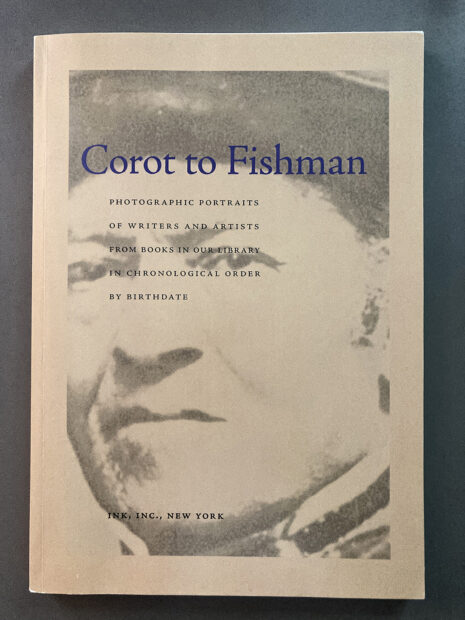
“Corot to Fishman: Photographic Portraits of Writers and Artists From Books In Our Library In Chronological Order By Birthdate.” Published by Ink, Inc., 2011
Corot to Fishman: Photographic Portraits of Writers and Artists From Books In Our Library In Chronological Order By Birthdate. Published by Ink, Inc., 2011.
This review comes with the disclaimer that Corot to Fishman: Photographic Portraits of Writers and Artists From Books In Our Library In Chronological Order By Birthdate is a slightly dated book that probably can’t be acquired. A note on the back page reads:
TWENTY-SIX COPIES PRINTED FOR PRIVATE DISTRIBUTION
DECEMBER 2011
INK, INC., NEW YORK

“Corot to Fishman: Photographic Portraits of Writers and Artists From Books In Our Library In Chronological Order By Birthdate.” Published by Ink, Inc., 2011
I bought my copy for $5 from a used bookstore on a dirt road. It resembles most other perfect bound softcover art books, about letter-size, with a yellowish cover with a purplish title on the spine. As the lengthy subtitle suggests, each page features a black and white photograph of a noteworthy figure from the world of arts and letters. Many of the portraits were made by similarly noteworthy figures like Bernice Abbot or Man Ray. The “PRIVATE DISTRIBUTION” notice may have something to do with a lack of rights on the part of the publisher to print these pictures. I only noticed the disclaimer and the tiny print run when I got the book home.
Used bookstores keep coming up in this piece. They must be on my mind. Speaking of, there was a time not too long ago, which maybe lasted into the Reagan years, when the standard for author headshots seemed to be full-bleed black and white portraits printed on the back of dust jackets. This was a really good look, and though I’ve ruminated on it I can barely even speculate as to why the practice was phased out by the publishing industry. Goodness, it was pleasant.
When I first moved to Austin I didn’t know anybody, so I wound up eating alone quite a bit. Once I went to Mother’s Cafe with my paperback copy of Nicholson Baker’s The Mezzanine so I could read and drink coffee while I waited for my food. When my enchiladas arrived I put the book in the seat across from me and ate. With the back cover facing out, and Nicholson standing there on the chair in his sweater, small, flat, and monochrome, smiling, making the kind of unflinching eye contact that is only innocuous when it emanates from still photographs, I felt I was in good company. His words were in my head, and there he was. There must have been a time when these author photos were a foolproof source of comfort. Try pulling some old novels off the shelf at a shop and flipping to the back cover. Often the authors will be there, sometimes with a grin. Others try to look thoughtful, because they’re authors. My favorite of all time shows Julio Cortázar peering through a hole in a fence. Take a book like this home. A person may reach a nearly perverse level of parasocial interaction by cradling it.
Some folks coordinate their libraries by spine color, which is confusing. I once knew a woman who shelved all her books with the spines facing inwards, so all that could be seen was a wavy mass of white and brownish page ends. Masochistic. I want a bookshelf of nothing but novels from the 20th century, front covers turned flat against the wall. A gallery of friends to watch over my hypothetical study.
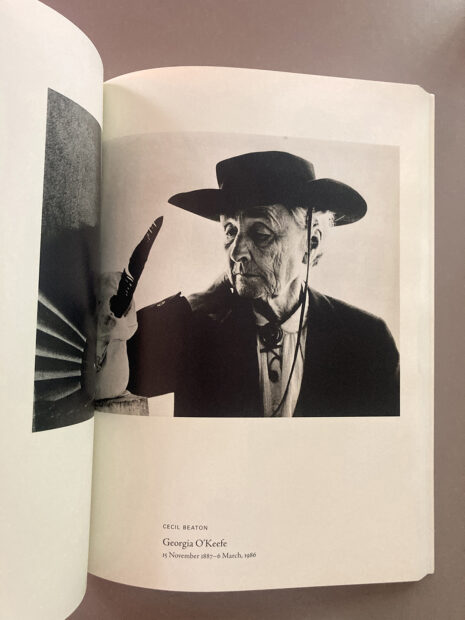
“Corot to Fishman: Photographic Portraits of Writers and Artists From Books In Our Library In Chronological Order By Birthdate.” Published by Ink, Inc., 2011
Corot to Fishman isn’t that exactly, but there are similarities. The book is a compilation that allows a reader to consider the faces of a slew of accomplished folks, rendered in accomplished manners, at leisure. I’m not entirely sure what purpose that serves, but then again there were only twenty-six copies printed and they were for private distribution. The big takeaway resides in that fact: There is endless potential in books, regardless of whether it seems like there are already too many out there. This is true even if the print run is minuscule, the copies shared amongst a group of friends. Those few volumes could end up anywhere, maybe in the middle of the woods, in the hands of anyone on any sort of associative journey.


